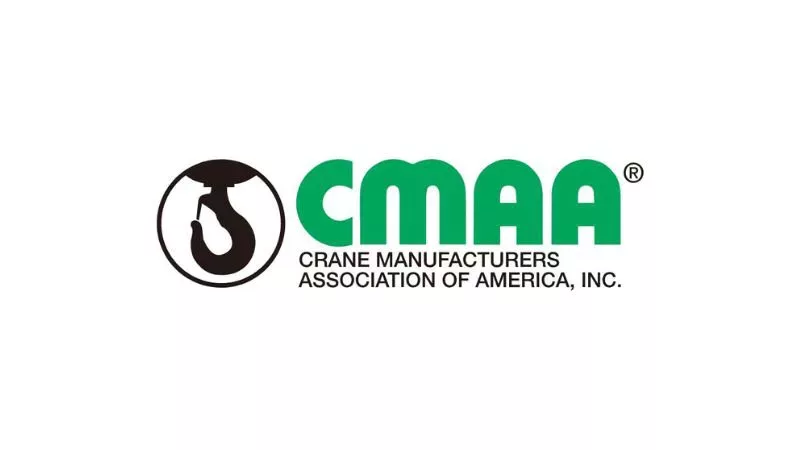What is the Duty Class of a Hoist
Hoist Duty Classification is a system used to categorize hoists based on their intended use and the severity of their working conditions. It helps users select the appropriate hoist for their specific application, ensuring optimal performance, safety, and longevity. It is also a key element in selecting the right equipment for your needs and avoiding over-use or underestimation of capacity.
The duty cycle of a hoist is essential to determining how well it will perform over time in your specific setting. The classifications are defined by the Hoist Manufacturers Institute (HMI), the European Federation of Materials Handling(FEM), the American Society of Mechanical Engineers(ASME), and the Crane Manufacturers Association of America(CMAA).
What is HMI Hoist Classification?

HMI (Hoist Manufacturers Institute) is an organization in the United States that provides standards and guidelines for the design, manufacture, and use of hoists.
The HMI defines six duty classifications for hoists:
- H1 (Infrequent or Standby): Used infrequently, mainly for standby or emergency purposes.
- H2 (Light): Used for light-duty applications with a maximum of 2 lifts per hour and a maximum of 10 lifts per day.
- H3 (Standard): Used for moderate-duty applications with a maximum of 5 lifts per hour and a maximum of 50 lifts per day.
- H4 (Heavy): Used for heavy-duty applications with a maximum of 10 lifts per hour and a maximum of 100 lifts per day.
- H5 (Severe): Used for severe-duty applications with a maximum of 20 lifts per hour and a maximum of 200 lifts per day.
- H6 (Continuous Severe): Used for continuous severe-duty applications with more than 20 lifts per hour and more than 200 lifts per day.
Factors that influence the hoist duty classification include:
- Maximum number of starts and stops per hour
- Load capacity
- Lifting speed
- Operating environment (temperature, humidity, corrosive conditions, etc.)
- Expected service life
What is FEM Hoist Classification?

FEM (European Federation of Materials Handling) is a European organization that provides a similar classification system for hoists and cranes.
The FEM standard defines nine duty classes, ranging from 1Am (the lightest) to 4m (the heaviest). The duty classes are determined by two factors:
- The total duration of use (operating time) over the hoist’s lifetime is denoted by a number (1, 2, 3, or 4).
- The load spectrum factor, which represents the average load the hoist will handle relative to its rated capacity, denoted by a letter (Am, Bm, or Cm).
Here are the FEM duty classes:
| FEM Duty Class | Lifting Class | Load Spectrum | Operating Time (hours) | Typical Applications |
|---|---|---|---|---|
| 1Am | L1 (light) | 1 (light) | 200 | Assembly shops, power stations, theaters |
| 1Bm | L1 (light) | 2 (medium) | 400 | General workshops, stores |
| 1Cm | L2 (medium) | 3 (heavy) | 800 | General workshops, stores |
| 2m | L3 (heavy) | 4 (very heavy) | 1,600 | Production workshops, warehouses |
| 3m | L4 (very heavy) | 4 (very heavy) | 3,200 | Production workshops, warehouses, foundries |
| 4m | L5 (intensive) | 4 (very heavy) | 6,300 | Bulk material handling, scrapyards, shipyards |
| 5m | L6 (severe) | 4 (very heavy) | 12,500 | Bulk material handling, heavy-duty foundries, steel mills |
| 6m | L7 (extreme) | 4 (very heavy) | 25,000 | Heavy-duty bulk material handling, mining, quarrying |
| 7m | L8 (exceptional) | 4 (very heavy) | 50,000 | Specialized heavy-duty applications, custom-designed equipment |
The FEM classification system also considers factors such as:
- Number of working cycles
- Load spectrum
- Operating environment
- Maintenance requirements
Differences between HMI and FEM
Typical applications:
- FEM duty classes cover a wide range of applications, from light assembly shops to heavy-duty bulk material handling and specialized equipment.
- ASME (HMI) duty classes focus on applications common in North America, such as powerhouses, machine shops, foundries, and steel warehouses.
International recognition:
- FEM classifications are widely used in Europe and other parts of the world.
- ASME (HMI) classifications are more commonly used in North America.
What is ASME Hoist Duty Classification?

ASME (American Society of Mechanical Engineers) is a professional association in the United States that develops and publishes standards for various engineering fields, including hoisting equipment. The ASME standard refers to the HMI (Hoist Manufacturers Institute) duty classifications, which are more commonly used in the United States.
The ASME standard most relevant to hoist duty classification is ASME B30.16, “Overhead Hoists (Underhung).” This standard provides guidelines for the design, construction, installation, operation, inspection, testing, and maintenance of overhead hoists.
- H1: Hoists in this class are typically idle for one to six months and are used for installation and/or maintenance purposes.
- H2: This class is suitable for light maintenance and fabrication applications, where capacity loads are infrequently handled, loads are randomly distributed, and the hoist has a low running time.
- H3: Hoists in this class are used for general machining applications with randomly distributed loads and a total running time not exceeding 25 percent of the work period.
- H4: This class is appropriate for high volume handling of heavy loads near rated of the hoist capacity, such as in steel warehousing, machining, and foundries. The total running time does not exceed 50 percent of the work period.
- H5: Hoists in this class are used for bulk material handling with attachments and approach continuous operation.
Here are the hoists’ intended use and operating conditions defined by ASME B30.16:
- HMI Class H1 or HMI Class H2 (Infrequent or Light Service): Used for infrequent or light-duty applications, such as powerhouses, public utilities, turbine rooms, motor rooms, and transformer stations.
- HMI Class H3 or HMI Class H4 (Standard or Heavy Service): Used for moderate to heavy-duty applications, such as machine shops, fabricating plants, steel warehouses, container yards, lumber mills, and standard-duty bucket and magnet operations.
- HMI Class H5 or HMI Class H6 (Severe or Continuous Severe Service): Used for severe or continuous severe-duty applications, such as heavy machine shops, foundries, steel warehouses, container handling, lumber mills, and heavy-duty bucket and magnet operations.
What is CMAA Hoist Classification?

CMAA (Crane Manufacturers Association of America) is another organization in the United States that provides standards and guidelines for the design, manufacture, and use of overhead cranes and hoists. The CMAA standards are widely used in North America, particularly in the crane industry.
The CMAA standard most relevant to hoist duty classification is CMAA Specification No. 70, “Specifications for Top Running Bridge and Gantry Type Multiple Girder Electric Overhead Traveling Cranes.” While this standard primarily focuses on overhead cranes, it also includes guidelines for hoists used in conjunction with these cranes.
CMAA Specification No. 70 defines six service classes for cranes and hoists based on their intended use and operating conditions:
- Class A (Standby or Infrequent Service): Used for infrequent handling of light loads, such as powerhouses, public utilities, turbine rooms, and transformer stations.
- Class B (Light Service): Used for light service with two to five lifts per hour, such as repair shops, light assembly operations, and service buildings.
- Class C (Moderate Service): Used for moderate service with five to ten lifts per hour, such as machine shops, paper mill machine rooms, and light fabrication plants.
- Class D (Heavy Service): Used for heavy service with ten to twenty lifts per hour, such as heavy machine shops, foundries, fabricating plants, steel warehouses, container yards, and lumber mills.
- Class E (Severe Service): Used for severe service with twenty or more lifts per hour, such as scrap yards, cement mills, lumber mills, fertilizer plants, and container handling.
- Class F (Continuous Severe Service): Used for continuous severe service with high lift frequencies, such as custom-designed specialty applications.
The CMAA service classes are similar to the HMI duty classifications but use different terminology and have some variations in the specific criteria for each class. The CMAA standard also provides guidance on the design, manufacture, and use of overhead cranes and hoists based on their service class.
Frequently Asked Questions
What are the applications of hoist?
- Foundries and Heat Treating: These settings often need hoists with a heavy use classification due to high operational temperatures and continuous lifting of heavy loads.
- Warehousing and Storage: These areas might operate effectively with a light use classification, as lifts are relatively infrequent and loads may be lighter.
- Fabrication and Bulk Material Handling: If you’re involved in fabrication or handling large quantities of materials, you’d typically look for a medium to heavy service hoist, balancing daily operating time with capacity.
- General Machining and Machine Shops: These settings require precision and may benefit from a light to medium service hoist, ensuring gentle handling and efficiency.
